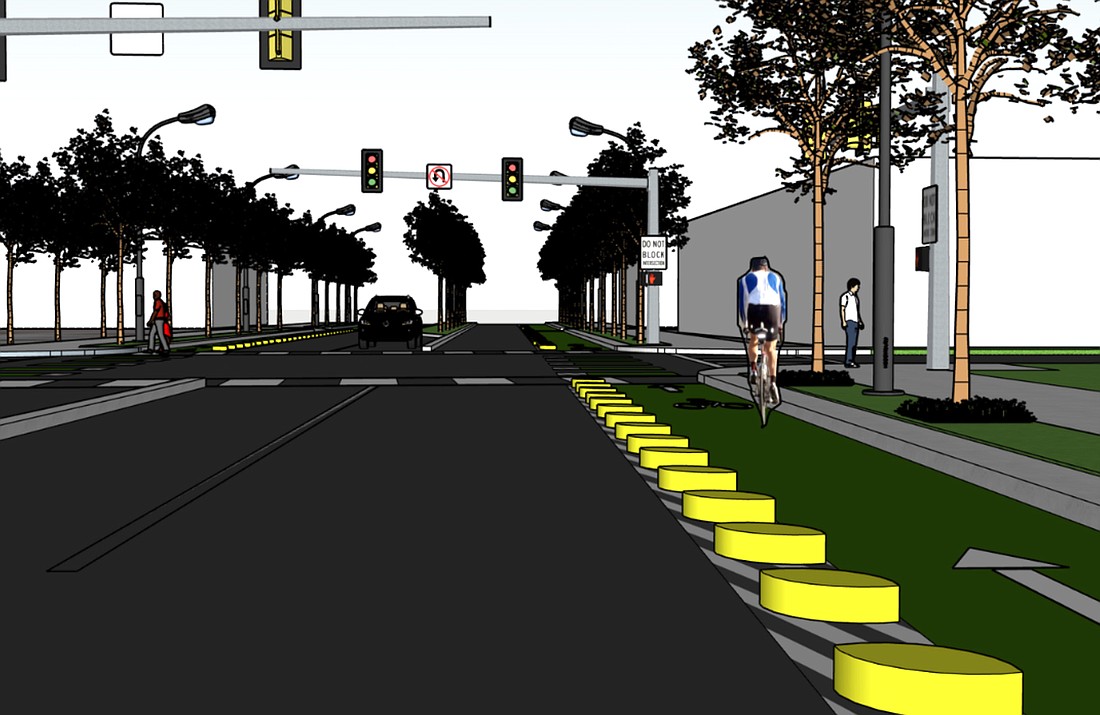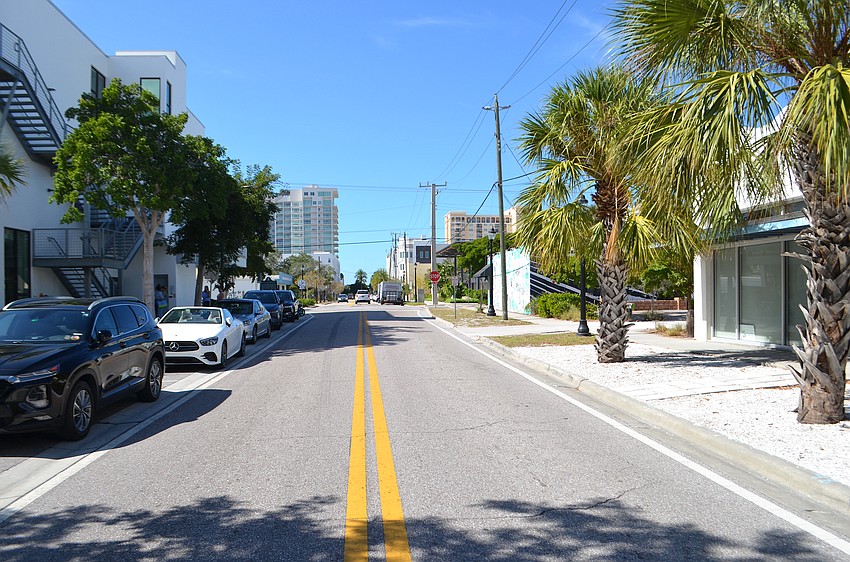- July 26, 2024
-
-
Loading

Loading

Now that the design phase on “complete street” projects for 10th Street and Boulevard of the Arts is moving from 30% to 60%, city traffic planners are reaching out to businesses and the general public for additional input.
Decisions have already been made regarding the big picture. Now staff is seeking input on some of the finer points residents want to see as the roads are converted into multi-modal corridors that are more more pedestrian and bicycle friendly.
In May 2022, the city unveiled preliminary concepts for the two projects: 10th Street between Orange Avenue and Tamiami Trail and Boulevard of the Arts from Orange Avenue to its western terminus alongside The Bay park.
Public input was accepted at that time, and since then engineering and design work has reached the 30% design stage.
“We had a public survey, we’ve had public meetings, and we reached out to the community in the past to gauge what they really wanted to see on Boulevard of the Arts and 10th Street,” said Senior Transportation Planner Corinne Arriaga. “What we heard was that Boulevard of the Arts was really the main street of the Rosemary District and they wanted it to accommodate pedestrians as well as flexible space for sidewalk cafes, for businesses and maybe for events they'd like to have wider sidewalks.”

Already a two-lane street, the result is an early design with “sharrows” indicating shared vehicle and bicycle lanes on what is considered a low-speed corridor. “We're going to be widening the sidewalks so if people don't feel comfortable bicycling on the roadway they can use that space on the sidewalk as well,” Arriaga said.
Users of 10th Street will see the largest transformation as, similar to Ringling Boulevard, four lanes will be narrowed to two with protected bicycle lanes on both sides. At U.S. 41 is an already-planned FDOT roundabout.
“For 10th Street, people felt that this was the gateway to The Bay, so if they were going to walk or bike from their neighborhoods, like Central Cocoanut or Gillespie Park, that they wanted a safe place where they could access The Bay park,” Arriaga said. “We focused on creating protected bicycle lanes and wider sidewalks and we did focus on lane repurposing. We are going to reduce it from four lanes to two lanes, but the lanes are going to be wide enough to accommodate the boats that go through so it will accommodate everybody.”
The current round of input seeks opinions about aesthetic features such as materials of benches, planters, landscaping and other functional and visual enhancements. The city has posted a survey on its website and mailers were sent to approximately 1,000 businesses and residents within 300 feet of both corridors. Arriaga and other staff members also spent time personally canvassing businesses on and near the two streets to solicit input.
“We want to just make sure that businesses and property owners are aware of it so that way they know when this is built, they had a hand in it,” Arriaga said. “This is where they have their businesses. This is where they make their money. This is their community, and they had a hand in developing.
Even at completion of 60% design the projects are not imminent, but plans are to accelerate them beyond the typical road construction process. At that stage, the city will solicit design-build contractors to simultaneously design the remaining 40% and begin construction in phases as design is completed, a process that cuts years off of projects.
The city has applied twice for, and was denied, a $12 million federal Rebuilding American Infrastructure with Sustainability and Equity grant to pair with $3 million in city funds to pay for the estimated $15 million projects. Each time, Arriaga said, the applications received some high marks, the second elevated above the first.
“We've heard from several different people that the third time is the charm,” Arriaga said. “We are really hopeful this time, but if doesn’t happen we're gonna go to the commission and make some recommendations on how to move forward.”
Design is expected to reach 60% in May of 2024. From there, even if the RAISE grant application is successful, Arriaga said because of attached regulatory requirements a timeline for construction and completion remains undetermined.
“If and when you get federal funding, when they give you that money there are many things you have to check off their checklist before you can even go out to bid and use their money,” she said. “It's tough to tell.”